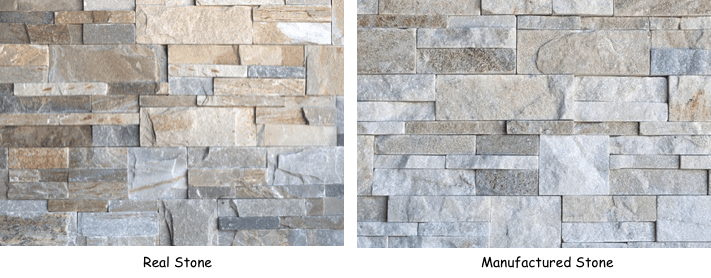Margarine became a popular butter substitute in the mid 20th century, consumed for it’s supposed cholesterol-lowering effect. Most tasted nothing like real butter, but the game started to change when “I Can’t Believe It’s Not Butter” was Introduced in 1981. Improvements were made over the years, and from what I read (I don’t use the product), it actually does taste and cook like real butter. Many would still argue that nothing is better than the real thing, but for those who need to lower their calorie intake, or for vegans who want a non animal based product, the substitute has great value. And the margarine now has no trans fats, some are made from organic ingredients. (I cook mostly with olive oil, but when I need butter, I do use the real one.)
In the selection of finish materials for both the interior and exterior of a house, choices are often made between using natural materials vs. manufactured alternatives. The decision can come down to a variety of factors- aesthetics, cost, maintenance, durability, environmental concerns. Not so long ago, the look of the man made alternative, (stone and wood being the most frequently substituted materials) wasn’t even close to the real thing. But technology and product development has yielded some surprising man made replications of these natural materials.
Stone is always a desirable material on both exteriors and interiors of homes, and here is one area where man made options have made substantial improvements in recent years. Manufactured stone is a mix of Portland cement, aggregates and iron oxides formed in molds to look like stone. The early products were never even close to replicating the look of stone, but today the products from the best manufacturers are very convincing, and it can be difficult to tell natural from manufactured stone in many cases. A high quality manufacturer may use thousands of molds from real stones. Like the diner who is looking for a low calorie alternate to butter, budget conscious homebuilders can get the look of stone for 1/3 to 1/2 the installed cost of natural stone. And like the vegan who’s concerns are more moral, the environmentalist would argue that the manufactured stone uses raw materials that are abundant, and unlike real stone, doesn’t deface the landscape in the mining process.
There are features of real stone that can’t be duplicated with the manufactured, the subtleties of color and sheen, it’s durability, and the art that comes with a hand crafted installation. It will always be a desired material for creating buildings. I’d rather use the real thing when possible, but I’ve come around to accepting the “fake” for what it is- a beautiful, cost effective cladding material that can add texture, color and interest to the homes I design.

